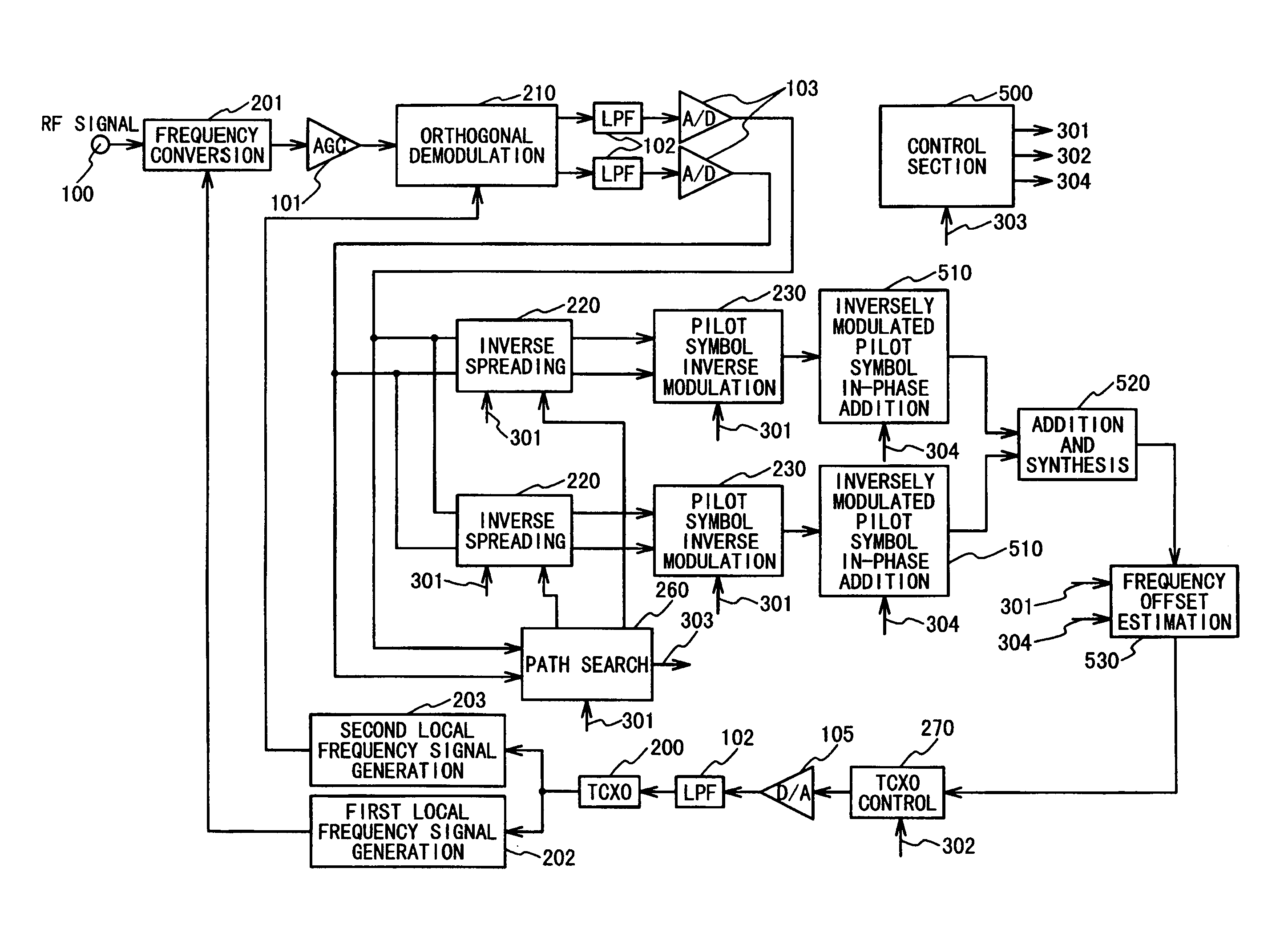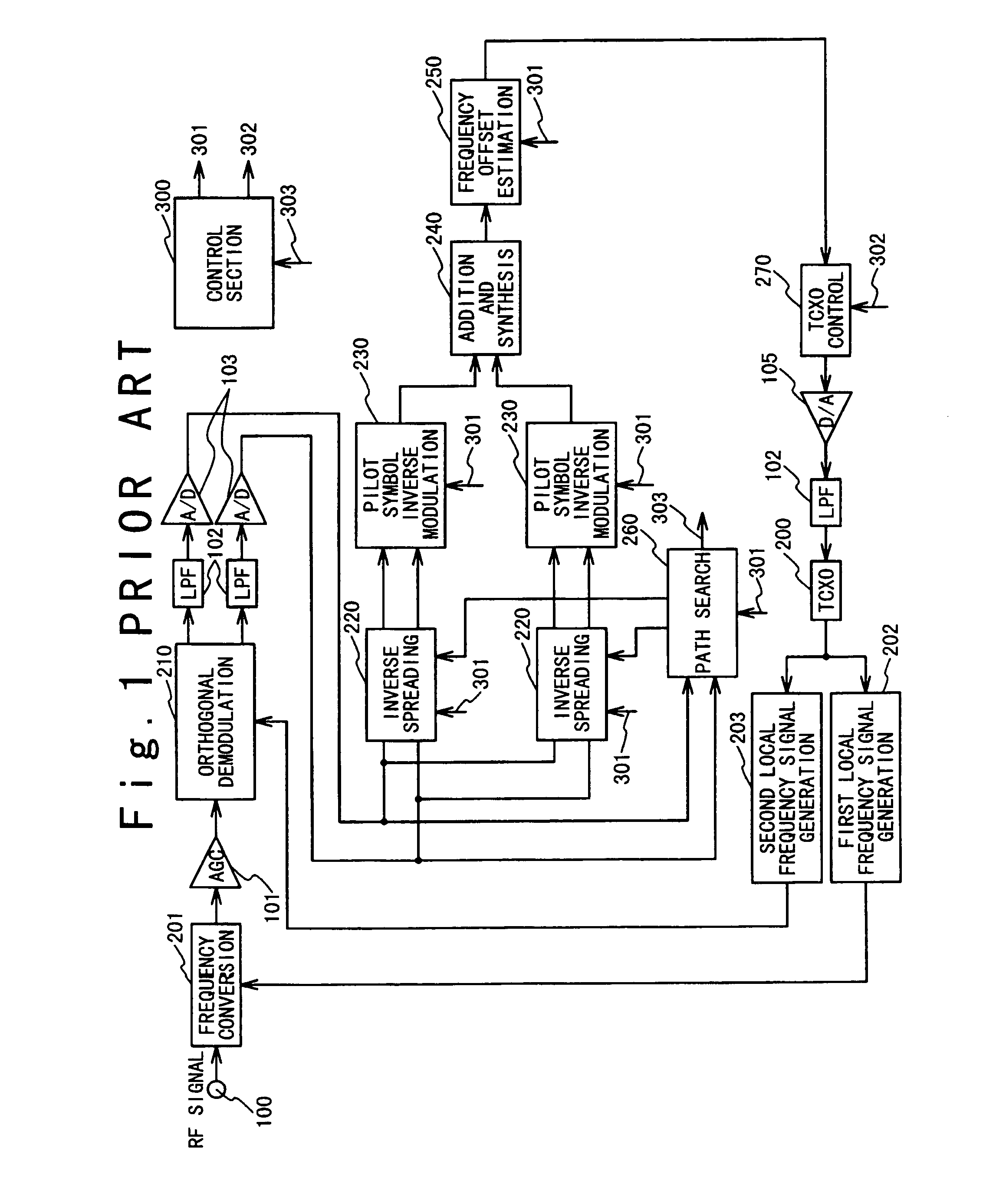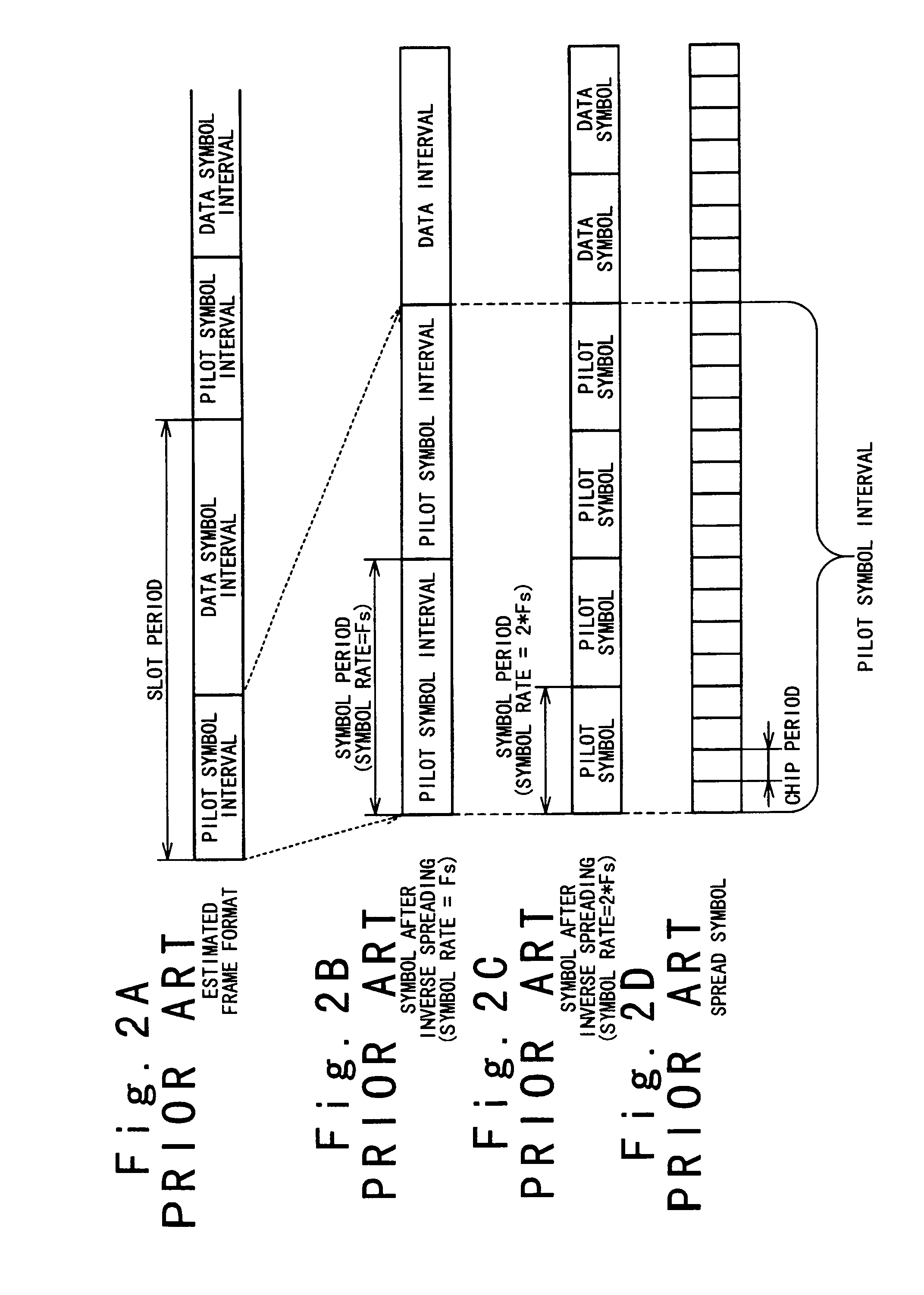CDMA receiver capable of estimation of frequency offset in high precision
- Summary
- Abstract
- Description
- Claims
- Application Information
AI Technical Summary
Benefits of technology
Problems solved by technology
Method used
Image
Examples
Embodiment Construction
[0065]Hereinafter, a receiver in a CDMA system of the present invention will be described below in detail with reference to the attached drawings.
[0066]FIG. 5 is a block diagram showing the structure of the receiver in the CDMA system according to an embodiment of the present invention. In this embodiment a structure relating to an inverse demodulation pilot symbol in-phase adders 510, an addition synthesizer 520, a frequency offset estimator 530, and a controller 500 is added or modified compared with the conventional system shown in FIG. 1. The other components are substantially identical to those of the conventional apparatus shown in FIG. 1. The blocks denoted by the same reference numerals as those shown in FIG. 1 are identical to those shown in FIG. 5 in the function and operation.
[0067]Referring to FIG. 1, an RF (radio frequency) signal, i.e., a high frequency signal from a transmitter received by an antenna is introduced to a frequency converter 201 via an input terminal 100...
PUM
 Login to View More
Login to View More Abstract
Description
Claims
Application Information
 Login to View More
Login to View More - R&D
- Intellectual Property
- Life Sciences
- Materials
- Tech Scout
- Unparalleled Data Quality
- Higher Quality Content
- 60% Fewer Hallucinations
Browse by: Latest US Patents, China's latest patents, Technical Efficacy Thesaurus, Application Domain, Technology Topic, Popular Technical Reports.
© 2025 PatSnap. All rights reserved.Legal|Privacy policy|Modern Slavery Act Transparency Statement|Sitemap|About US| Contact US: help@patsnap.com



